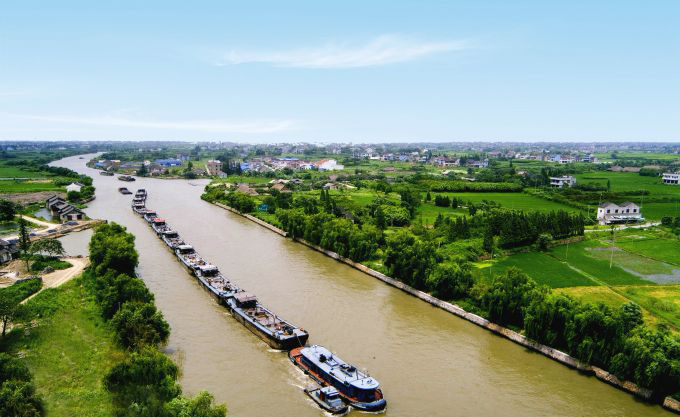Academics advocate strengthening research on linear cultural heritage

The Beijing–Hangzhou Grand Canal, the longest as well as one of the oldest canals in the world, has played a significant role in economic and cultural exchanges between southern and northern China.
In order to raise the level of protection and utilization of linear cultural heritage, some scholars recommend innovating technical means as well as strengthening research and management.
Derived from cultural routes, linear cultural heritage is one of the emerging research fields of cultural heritage in the world. Cultural routes began to be recognized as forms of heritage in the 1980s and 1990s. Since the beginning of the 21st century, cultural routes have been identified in the World Heritage List.
Linear cultural heritage covers a large space, including cultural routes and heritage corridors, among others. With rich resources of linear cultural heritage, China has paid increasing attention to protection and reasonable utilization in recent years.
An ancient civilization with a long history, China has a long list of linear cultural heritage—the Silk Road, the Ancient Tea Horse Road, the Ancient Shu Road, the Ancient Tangbo Road, the Maritime Silk Road, the Qin Straight Road, the Beijing–Hangzhou Grand Canal and the Red Army’s Long March Route are all linear cultural heritage.
In recent years, China has made some achievements in protection, management and rational utilization of linear cultural heritage, but it has also faced greater pressure and challenges. Characterized by large spans of time and space as well as complex composition, linear cultural heritage is quite challenging to protect and manage. In many other places around the world, protection of linear cultural heritage has mainly been achieved through regional planning.
In China, protection and management of cultural heritage are mainly done through cultural relics protection units, and their capacity to accommodate trans-regional cultural heritage is relatively limited. For a long time, insufficient knowledge and lack of data have weakened the foundation of research, protection and rational utilization of linear cultural heritage. In addition, rapid urbanization, among other factors, has brought new topics to protection.
Conducting in-depth research is the basis for strengthening protection and utilization of linear cultural heritage. Chinese scholars have begun to pay attention to and research cultural routes and linear cultural heritage in the 21st century. They have conducted some theoretical studies with some achievements. However, there are still some shortcomings.
Liu Qingyu, an associate professor at the Institute of History and Culture at Qufu Normal University, said that previous studies have mainly focused on separate ancient buildings and sites included in linear cultural heritage. However, comprehensive studies from a holistic perspective have been relatively inadequate.
Sun Hua, a professor from the School of Archeology and Museology at Peking University, said that researchers need to clarify “cultural routes,” “linear heritage” and other basic concepts.
In recent years, new technologies represented by spatial information technology have been applied to the study of linear cultural heritage. For example, a research team led by Zhang Yukun, a professor from the School of Architecture at Tianjin University, has conducted holistic research on visual protection of large-scale linear cultural heritage in China, focusing on case studies of the Great Wall military defense system and the Ming Dynasty coastal defense military settlements to explore protection strategies. In their research, unmanned aerial vehicle low-altitude information technology, space information technology and other new technologies played an important role.
Experts suggested further investigation of linear cultural heritage to get sufficient knowledge and data. They also advocate strengthening international exchange and theoretical research in terms of investigation, management, protection and utilization of linear cultural heritage.
ZHANG CHUNHAI is a correspondent with Chinese Social Sciences Today.
(edited by JIANG HONG)
